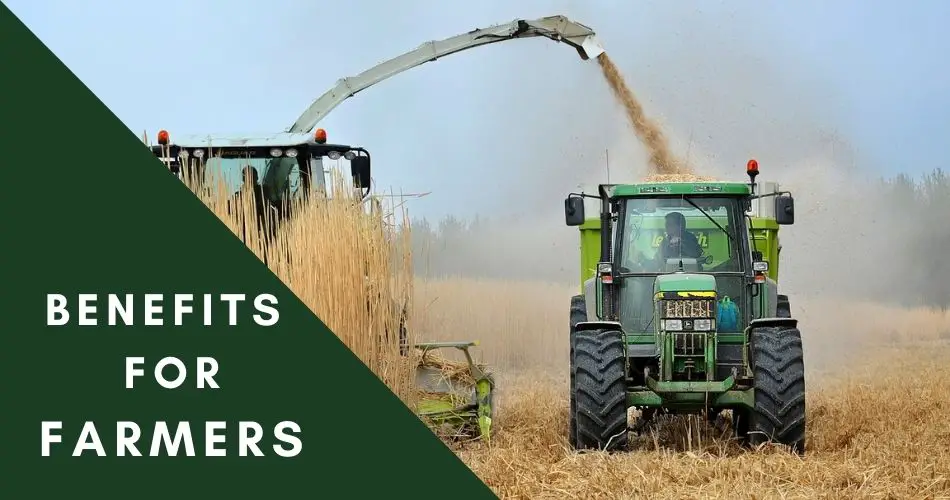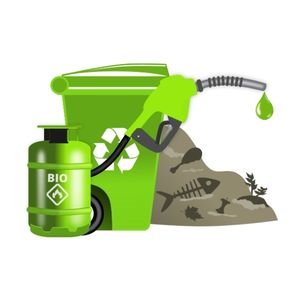Global warming is increasing day by day due to the adverse impact of pollution worldwide. Also, climate change has become a common phenomenon. With that, the environment is getting degraded, and essential resources are depleted.
There is an immediate need to protect nature by controlling global warming. Otherwise, we can expect an unlit future for humans and other living beings.
Governments and major environmental organizations across the globe are working to introduce projects and policies to control pollution. The automobile industry is moving towards the electric era. Likewise, the aviation industry is also practicing the use of Sustainable Aviation Fuel (SAF) to reduce carbon dioxide emissions.
What actually is SAF? Is it sustainable and does it reduce CO2 emissions? Let’s find out in this detailed article.
Table of Contents
What is Sustainable Aviation Fuel (SAF)?
Sustainable Aviation Fuel abbreviated as SAF is a type of fuel produced from sustainable feedstocks for the aviation industry. This fuel helps to reduce carbon emissions and can be used by certified aircraft.
At present, aircraft use Jet A-1 Kerosene fuel which is appropriate for almost all turbine engines. As per the Carbon Dioxide Emissions Coefficients report published by the Environment – US Energy Information Administration (EIA) in November 2021, Aviation Jet Fuel produces 21.5 pounds of CO2 per gallon.
More than 100,000 flights take off and land every day across the globe and we can calculate how much CO2 is emitted every single second. CO2 emissions are harmful to our environment because they activate the greenhouse effect and result in the increase of Earth’s temperature.
That’s why Sustainable Aviation Fuel is in practice to mitigate the CO2 emissions produced by jet aircraft.
What is Sustainable Aviation Fuel made of?
Sustainable Aviation Fuel is produced from sustainable feedstocks that are collected sustainably each year in the United States and other manufacturing countries.

Over 1 billion dry tons of biomass are collected every year to produce 50 to 60 billion gallons of low-carbon biofuels in the United States.
The following list of resources is used to produce SAF.
- Cooking Oil from Animals or Plants
- Non-Palm Oils from Animals or Plants
- Solid wastes from Homes and Businesses like paper, textiles, food scraps, packaging, etc.
- Forestry Waste including waste wood
- Dedicated Energy Crops including fast-growing plants and algae
- Wood mill waste
- Wet wastes including wastewater treatment sludge and manure
- Agricultural residues
- Oil Seeds
- Corn Grain and various other fats, oils, and greases
What companies produce Sustainable Aviation Fuel?
Research reports published on various media forecast the SAF market to reach USD 15.716 million in the next 10 years (by 2030). Among different regions across the world, North America is expected to own the largest share of the SAF market.
There are big companies already working to fulfill the growing demand for Sustainable Aviation Fuel worldwide. Besides, new startup companies are also being established to compete in the SAF market.
At present, the major companies working on the Sustainable Aviation Jet Fuel market are:
Neste (Located in Finland)
This company manufactures Neste MY Sustainable Aviation Fuel and claims to reduce Greenhouse Gas (GHG) Emissions by up to 80 percent compared to traditional fuels.
Fulcrum BioEnergy (Located in the United States)
Fulcrum BioEnergy has partnered with Essar Oil (UK) Limited to produce SAF and reduce CO2 emissions by 70 percent.
World Energy (Located in the United States)
World Energy is another major company working to produce SAF for CO2 emission reduction.
Other major companies include LanzaTech (US) and Total Energy (US). Besides, there are startup companies and some of them are Northwest Advanced Biofuels (Austria), Preem (Sweden), Atmosfair (Germany), OMV (Austria), Prometheus Fuels (US), Wastefuel (US) and Red Rocks Biofuel (US).
Sustainable Aviation Fuel Benefits
Sustainable Aviation Fuel is introduced primarily to reduce carbon dioxide emissions and enhance greener aviation.
Some major benefits of using SAF
SAF is sustainable
As the name suggests, SAF is sustainable because it is produced from sustainable and renewable sources. This fuel can be used safely on all certified aircraft as it meets the same characteristics of Jet A Aviation fuel.
Enhanced Aircraft Performance
The use of SAF can enhance aircraft performance because it contains fewer aromatic components. With that, aircraft engines can burn cleaner SAFs and lower local emissions of hazardous compounds.
The advantage for Farmers

Farmers directly benefit from the production of Sustainable Aviation Fuels. As we discovered the requirements of feedstocks for the production of SAFs, farmers can earn more revenue by providing feedstocks to the SAF manufacturing companies.
Farmers in the United States earn extra revenue during off-seasons by growing biomass crops for SAF production.
Furthermore, agricultural farms benefit from a reduction in nutrient losses and improved soil quality.
Environmental Benefits
The key environmental benefit of using SAF is the huge reduction of carbon dioxide emissions which helps to keep the environment clean and green. Besides, planting biomass crops for SAF production can handle soil erosion and enhance water and soil quality.
Biomass crops also store carbon in the soil and improve overall biodiversity. In addition, the use of wet wastes like sewage sludge helps to mitigate pollution pressure on watersheds.
Can existing aircraft utilize SAF?
The SAF possesses similar characteristics to conventional jet fuel may it be chemical or physical. The commercial flights are already being conducted on an existing aircraft with 50% jet fuel and 50% bio-jet fuel to reduce CO2 and Greenhouse Gas (GHG) emissions.
No extra technology is required for an existing aircraft to use SAF. However, jet fuels, SAFs, and their blending process must be certified by the aviation regulatory body for safe commercial flight operation.
Sustainable Aviation Fuel vs Jet Fuel
The main difference between Sustainable Aviation Fuel and Jet Fuel is the carbon dioxide (CO2) and Greenhouse Gas (GHG) emission.
Let’s understand SAF vs Jet Fuel with the tabular illustration below.
| SUSTAINABLE AVIATION FUEL (SAF) | TRADITIONAL JET FUEL |
 |  |
| SAF is produced from feedstocks like oilseeds, wet wastes, forestry residues, fats, etc. | Jet Fuel is produced from Crude Oil. |
| SAF reduces CO2 and GHG emissions by up to 80%. | Jet Fuel produces 21.5 pounds of CO2 per gallon. |
| SAF enhances fuel efficiency. | Jet Fuel features less fuel efficiency in comparison to SAF. |
| SAF has a higher energy density. | Jet Fuel has less energy density compared to the SAF. |
| SAF is more expensive than Jet Fuel. | Jet Fuel is 3 to 4 times less expensive than SAF. |
Sustainable Aviation Fuel Demand
The first test flight with Sustainable Aviation Fuel was conducted by Virgin Atlantic in 2008. After the successful test flight, more than 2,500 commercial passenger flights were operated between 2011 and 2015 using 50 percent bio-jet fuel (produced from feedstock like cooking oil, sugarcane, algae, camelina, and jatropha) blended with conventional jet fuel.
United Airlines, the major carrier of the United States, became the first-ever airline company to introduce SAF into regular commercial operation with daily flights from Los Angeles Airport (LAX).
Likewise, more airlines showed interest in using SAF in the year 2019. 40 airlines across the globe operated more than 215,000 commercial flights using SAFs.
These statistics can be used to predict the demand for Sustainable Aviation Fuel will eventually grow shortly. Various airline companies have established long-term purchase agreements with biofuel manufacturing companies.
Sustainable Aviation Fuel Availability
There are various companies established to produce Sustainable Aviation Fuel. The demand for SAF is growing eventually with airlines showing interest in it.
Major companies and new startup establishments are working relentlessly to fulfill the increasing demand for SAF in the aviation industry. The SAF availability at present is limited however, we can expect the production process to escalate with the introduction of new technology.
Some major companies with SAF production capabilities are included in the table below.
| COMPANY | CAPACITY | LOCATION |
| Fulcrum Bioenergy | 40 million litres | United States |
| LanzaTech | 58 million litres | China |
| Total BioFuel | 256 million litres | France |
| LTU Greenfuels | 64 million litres | Sweden |
| Velocys – Altato | 40 million litres | United Kingdom |
Sustainable Aviation Fuel Price per gallon
The price of Sustainable Aviation Fuel is higher than conventional jet fuel. It can be five times more than Jet A1 fuel depending upon the region and requirements.
The current price of Jet Fuel per Gallon in the United States is $2.46. So, the price of Sustainable Aviation Fuel can be expected almost $13 per gallon.
The latest price of SAF per tonne is US$2,500 while the Jet Fuel is available for US$500 per tonne.
Sustainable Aviation Fuel ETF
The SAF market is projected to grow vibrantly over the coming years due to the increasing worldwide demand from airlines. With that, investors have the opportunity to invest in biofuels.
Sustainable Aviation Fuel Stocks
There are various major companies established to produce Sustainable Aviation Fuel. Besides, new startup companies are being introduced to compete in the SAF market. With that, the opportunity for investment escalates.
At present, you can invest in various Sustainable Aviation Fuel Stocks by choosing energy companies. For instance, you can invest in Neste (NTOIY) whose recent price is $23.60 and market value is $36.
JetBlue Sustainable Aviation Fuel Transition
JetBlue, a major airline in the United States, announced in September 2021 to accelerate its transition process to SAF. The airline established an offtake agreement with a leading bioenergy producer SG Preston.

JetBlue commits to using a minimum of 10 percent SAF on a blended basis by the year 2030. By 2023, the airline expects to convert 8 percent of its total fuel usage to SAF. A total of 30 percent of fuel buy will be converted to SAF across Newark Liberty International Airport (EWR), John F. Kennedy International Airport (JFK), and LaGuardia Airport (LGA).
As per the agreement, SG Preston will be delivering over 670 million gallons of blended SAF to JetBlue for flight operations at EWR, JFK, and LGA. For that, JetBlue plans to invest over US$1 billion.
Besides JetBlue, major carriers of the United States and other countries worldwide are accelerating the use of SAF. Over 40 airlines have already established purchase agreements with energy companies.
Disadvantages of Sustainable Aviation Fuel
SAFs offer lots of benefits to airline companies, energy producers, farmers, and the overall environment. However, we can point out some disadvantages or limitations that include:
- SAF is four to five times more expensive than conventional jet fuel.
- Production of SAF can become a competitive factor for food supply as farmers find energy crops more profitable than food crops.
- SAF production can lead to detrimental land-use changes like excessive use of water, clearing agricultural land for energy crops, eutrophication from fertilizer use and so on.
The disadvantages or limitations mentioned above are not disturbing factors.
Sustainable Aviation Fuel Criticism & Challenges
Critics are present everywhere and criticisms are common whenever new ideas or concepts develop. SAF is not a new idea as it has already crossed a decade mark of introduction.
We can read various criticisms published by critics pointing out the challenges to producing and implementing the use of SAF in the global aviation industry.
The major challenges include:
- Fulfilling the 100% worldwide demand of SAF by the year 2050.
- Ability to reduce a minimum of 50% GHG emissions compared to traditional jet fuel.
- Generate adequate feedstocks for SAF production.
Conclusion
Due to the increasing pollution, the temperature of the earth is rising day by day. The automobile industry, aviation industry, and factories are highly responsible for global warming.
To mitigate the impact of the greenhouse effect, every industry must work out to introduce technologies for cleaner and greener environments.
The automobile industry is transitioning towards the electric era, the aviation industry is starting the use of SAF whereas other industries are also focusing on protecting Mother Nature.
Not only companies but regulatory bodies, organizations, and governments must implement plans, policies, and regulations to enhance the overall health of our planet so that, we as well as our future generations will benefit.
What is Sustainable Aviation Fuel made of?
Sustainable Aviation Fuel is made from feedstocks like wet wastes, algae, fats, oils, corn grain, energy crops, agricultural residues, solid wastes from homes and businesses, waste woods, and much more.
Is Sustainable Aviation Fuel Sustainable?
SAF is sustainable because it is produced from sustainable and renewable resources.
What is meant by Sustainable Aviation Fuel?
SAF is produced from feedstocks and has similar physical as well as chemical characteristics to that of conventional jet fuel. It is used by aircraft to reduce CO2 and GHG emissions by up to 80%.
Who makes Sustainable Aviation Fuel?
Biofuel Energy Companies like Neste, Fulcrum BioEnergy, World Energy, etc. produce SAF in their manufacturing plant.





